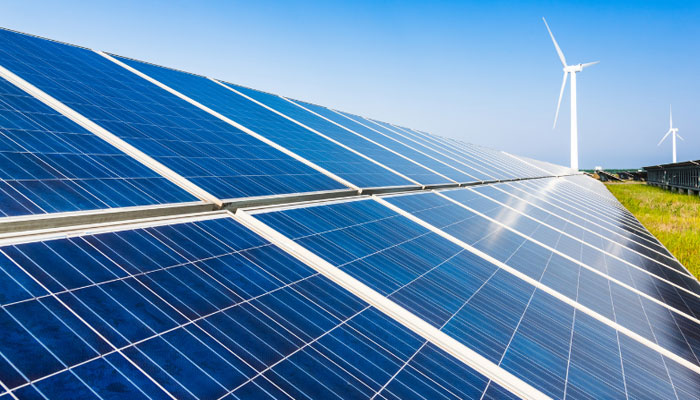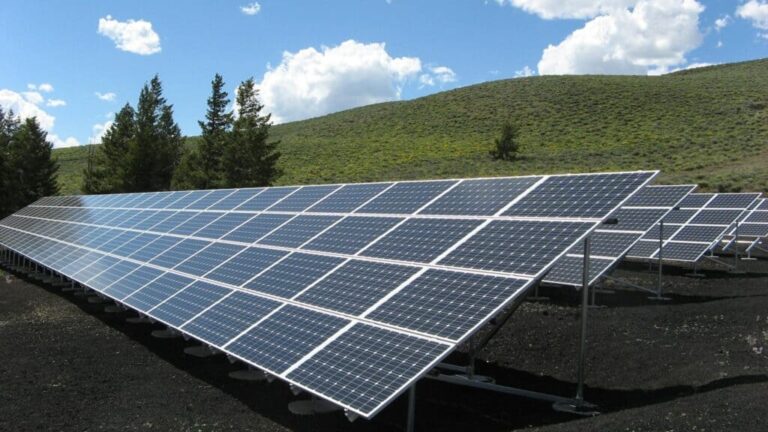Comparing Solar Panels: Which Type Is Best for Your Energy Needs?
In recent years, the demand for sustainable energy sources has surged, with solar power emerging as a prominent contender. As individuals and businesses seek to reduce their carbon footprint and lower energy costs, the choice of solar panels becomes crucial. This article aims to dissect the various types of solar panels available in the market, offering insights into their efficiency, durability, and suitability for different energy needs.
Meta Description:
Discover the best solar panel type for your energy requirements. Compare efficiency, durability, and cost-effectiveness to make an informed decision.
Types and Categories
Solar panels come in different types, each with its unique characteristics and applications. Understanding these distinctions is essential for selecting the most suitable option.
Monocrystalline Solar Panels
Definition:
Monocrystalline solar panels are crafted from high-purity silicon, ensuring greater efficiency and longevity.
Efficiency:
With a higher efficiency rate compared to other types, monocrystalline panels maximize energy production per square foot.
Durability:
Thanks to their single-crystal structure, monocrystalline panels boast exceptional durability, making them ideal for harsh weather conditions.
Polycrystalline Solar Panels
Definition:
Polycrystalline panels are manufactured using melted raw silicon, resulting in a less uniform appearance but offering cost advantages.
Efficiency:
While slightly less efficient than monocrystalline panels, polycrystalline panels still deliver commendable performance, especially in moderate climates.
Durability:
Polycrystalline panels exhibit good durability, although they may degrade faster than their monocrystalline counterparts over time.
Thin-Film Solar Panels
Definition:
Thin-film panels utilize layers of photovoltaic materials deposited onto a substrate, offering flexibility and versatility.
Efficiency:
Although less efficient than crystalline panels, thin-film technology excels in low-light conditions and is suitable for large-scale installations.
Durability:
Thin-film panels are lightweight and flexible, making them less prone to damage from hail or debris. However, their lifespan may be shorter compared to crystalline panels.
Bifacial Solar Panels
Definition:
Bifacial panels capture sunlight from both sides, maximizing energy production by utilizing reflected light.
Efficiency:
By harnessing light from above and below, bifacial panels can achieve higher efficiency rates, particularly in environments with reflective surfaces.
Durability:
While offering impressive efficiency gains, bifacial panels may require additional support structures and careful installation to ensure optimal performance and durability.
Symptoms and Signs
Understanding the signs of solar panel inefficiency or malfunction is crucial for maintaining optimal energy production and identifying potential issues early on.
Reduced Energy Output
Symptoms:
A noticeable decline in energy generation despite consistent sunlight exposure could indicate panel degradation or shading issues.
Signs:
Regular monitoring of energy output through performance metrics or monitoring systems can help identify deviations from expected values, signaling underlying problems.
Physical Damage
Symptoms:
Visible cracks, discoloration, or warping on the panel surface may indicate physical damage from hail, debris, or extreme weather conditions.
Signs:
Routine visual inspections coupled with maintenance checks can reveal any visible signs of wear or damage, prompting timely repairs or replacements.
Efficiency Loss Over Time
Symptoms:
Gradual declines in energy production over the panel’s lifespan may suggest performance degradation due to aging or environmental factors.
Signs:
Periodic performance testing and comparison against manufacturer specifications can reveal efficiency losses, prompting proactive maintenance or upgrades.
Causes and Risk Factors
Several factors can influence the efficiency and longevity of solar panels, ranging from environmental conditions to installation practices.
Environmental Factors
Causes:
Exposure to extreme temperatures, humidity, or pollution can accelerate panel degradation and reduce overall performance.
Risk Factors:
Regions prone to severe weather events or air pollutants pose higher risks of panel damage and efficiency loss.
Installation Quality
Causes:
Poor installation practices, such as improper mounting, shading, or orientation, can hinder sunlight absorption and lead to energy losses.
Risk Factors:
Inexperienced installers or inadequate installation guidelines increase the likelihood of suboptimal performance and premature system failure.
Material Degradation
Causes:
Exposure to ultraviolet radiation, moisture, and thermal cycling can degrade panel materials over time, compromising efficiency and reliability.
Risk Factors:
Low-quality components or insufficient protection measures leave panels vulnerable to environmental stressors, hastening degradation and reducing lifespan.
Diagnosis and Tests
Accurate diagnosis of solar panel issues requires comprehensive testing and analysis to pinpoint underlying causes and formulate effective solutions.
Performance Monitoring
Diagnostic Tool:
Continuous monitoring of energy output and performance metrics provides valuable insights into panel efficiency and identifies deviations from expected values.
Testing Methods:
Data logging, remote monitoring systems, and performance analysis software enable real-time tracking of energy production and system performance.
Visual Inspection
Diagnostic Tool:
Routine visual inspections allow for the detection of physical damage, wear, or irregularities on the panel surface or mounting structure.
Testing Methods:
Close-up visual assessments, aerial inspections, or thermal imaging surveys help identify signs of degradation, shading, or installation errors.
Electrical Testing
Diagnostic Tool:
Electrical testing measures voltage, current, and resistance levels to assess panel performance and identify any electrical faults or anomalies.
Testing Methods:
Multimeter measurements, IV curve tracing, and thermal imaging diagnostics help diagnose electrical issues and pinpoint malfunctioning components.
Treatment Options
Addressing solar panel issues effectively requires a combination of maintenance practices, repairs, and upgrades tailored to specific needs.
Routine Maintenance
Treatment:
Scheduled cleaning, inspection, and maintenance routines mitigate environmental damage, prevent debris buildup, and ensure optimal panel performance.
Strategies:
Regular cleaning with mild detergent and water, visual inspections for damage or wear, and preventive measures against shading or obstruction.
Repairs and Replacements
Treatment:
Timely repairs or replacements of damaged or malfunctioning components restore panel functionality and prolong system lifespan.
Strategies:
Replacing cracked or delaminated cells, repairing electrical connections, or upgrading outdated components to improve efficiency and reliability.
Performance Optimization
Treatment:
Implementing efficiency-enhancing measures and technology upgrades maximizes energy production and optimizes system performance.
Strategies:
Installing microinverters for individual panel optimization, adding bypass diodes for shading mitigation, or upgrading to higher-efficiency panels.
Preventive Measures
Proactive measures to safeguard solar panel integrity and performance are essential for minimizing risks and maximizing long-term benefits.
Environmental Protection
Tips:
Shielding panels from direct sunlight, extreme temperatures, or corrosive substances extends lifespan and maintains optimal performance.
Strategies:
Using protective coatings, shading devices, or weatherproof enclosures enhances durability and resistance to environmental stressors.
Quality Installation
Tips:
Ensuring proper panel orientation, spacing, and mounting angles optimizes sunlight absorption and reduces shading effects.
Strategies:
Hiring certified installers, adhering to manufacturer guidelines, and conducting site evaluations minimize installation errors and maximize efficiency.
Regular Inspections
Tips:
Conducting routine visual inspections and performance assessments identifies issues early on and allows for timely intervention.
Strategies:
Implementing scheduled maintenance routines, utilizing remote monitoring systems, or utilizing automated diagnostic tools streamline inspection processes and ensure comprehensive coverage.
Education and Training
Tips:
Investing in installer training programs, industry certifications, or homeowner education initiatives enhances awareness and knowledge of solar panel maintenance and care.
Strategies:
Participating in workshops, webinars, or online courses on solar panel maintenance and troubleshooting equips stakeholders with valuable skills and resources.
Personal Stories or Case Studies
Real-life experiences offer valuable insights into the challenges and rewards of solar panel ownership and maintenance.
Case Study: Residential Solar Installation
Story:
John, a homeowner in sunny California, invested in a rooftop solar panel system to reduce his electricity bills and carbon footprint. However, after a few years of operation, John noticed a significant drop in energy production despite ample sunlight. Concerned about the system’s performance, he contacted a solar technician for inspection.
Analysis:
Upon inspection, the technician discovered accumulated dust and debris on the panel surface, hindering sunlight absorption and reducing energy output. Additionally, shading from nearby trees exacerbated the efficiency losses. After thorough cleaning and pruning, coupled with the installation of microinverters for shading mitigation, John’s solar system regained its optimal performance, reaffirming the importance of regular maintenance and proper installation.
Expert Insights
Industry experts offer valuable perspectives on solar panel technology, maintenance best practices, and future trends.
Expert Quote: Dr. Sarah Lopez, Solar Energy Specialist
Insights:
“Maintaining optimal performance of solar panels requires a multifaceted approach, encompassing regular maintenance, quality installation, and proactive troubleshooting. By adopting best practices and leveraging advancements in technology, stakeholders can maximize energy production, minimize downtime, and ensure long-term viability of solar investments.”
Conclusion
In conclusion, selecting the right type of solar panel is crucial for meeting energy needs efficiently and sustainably. Whether opting for monocrystalline, polycrystalline, thin-film, or bifacial panels, understanding their characteristics, performance metrics, and maintenance requirements is paramount. By implementing preventive measures, conducting regular inspections, and staying informed about industry developments, individuals and businesses can harness the full potential of solar energy while minimizing operational costs and environmental impact.




